
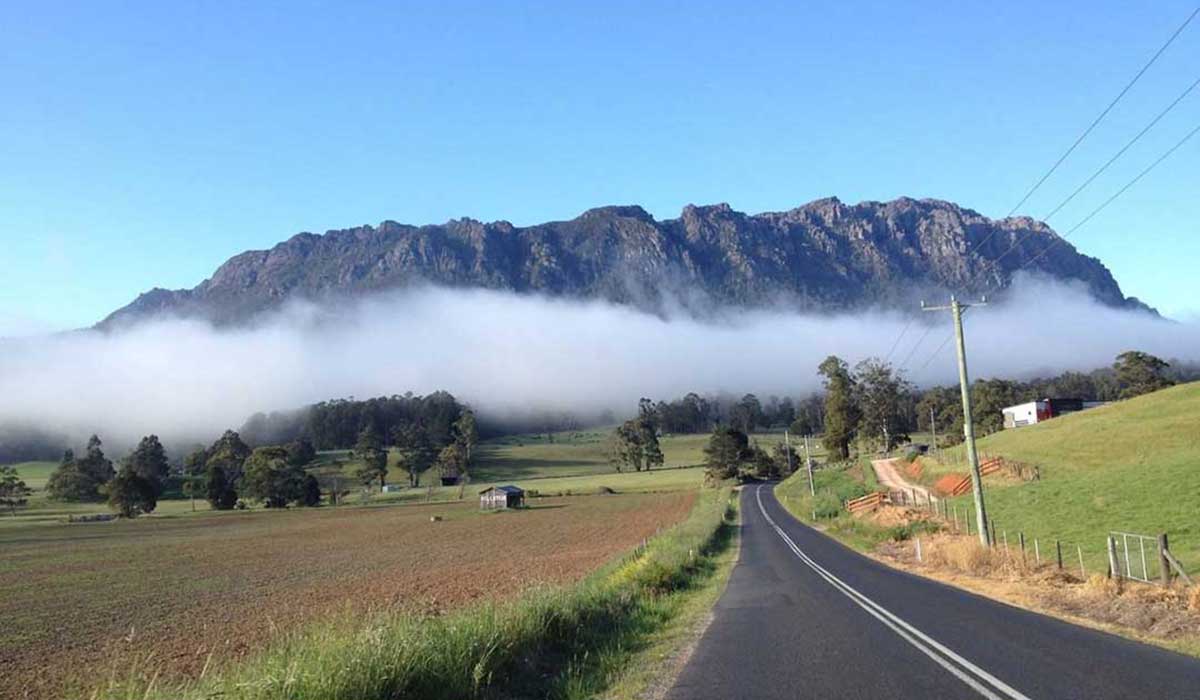
Mount Roland, Tasmania
Mount Roland stands at 1234 meters above sea level on the northern edge of the Great Western Tiers region of Tasmania. It provides an imposing backdrop to the Kentish Municipality and for the town of Sheffield. Like many of Tasmania's mountains, at first sight it would appear to be a difficult climb. From most angles it presents the onlooker with the steep bastions of seemingly impregnable cliffs. These ramparts form the containment walls of a huge dolerite plateau of which the summit tor is but a small part.
Mount Roland could be considered Tasmania’s equivalent of Uluru in Central Australia. As with Uluru, the changing position of the sun on the towering northern face of the mountain results in a myriad of different light patterns and mountain moods from dawn to dusk. Changing cloud formations and a winter snow capping add further dramatic atmosphere.
A number of well marked bushwalks provide a day's exercise. There are walking tracks from Claude Road and Gowrie Park to the summit. The walk includes the plains and plateau leading to the peak. There are two tracks to the summit, which provide 360-degree views to Bass Strait, Cradle Mountain and Barn Bluff. Mount Roland stands at 1234 metres above sea level.
The Owen Group
The conglomerate and sandstone making up Mount Roland are part of a geological unit named the Owen Group, of Late Cambrian to Early Ordovician age. The conglomerate contains well-rounded cobbles and pebbles of quartzite, sandstone, chert and reef quartz in a sparse sandy matrix. These materials were probably derived from earlier highlands of Proterozoic rocks containing quartzites and sandstones in the uplifted Tyennan and Rocky Cape blocks in the central west and far northwest of Tasmania.
Mount Roland is an imposing monolith composed largely of conglomerate, a sedimentary rock formed in large rivers or alluvial fans. On the very top and behind the frontal peak there are also some overlying sandstones. The conglomerate is siliceous (quartz-rich), very hard and resistant to erosion and chemical weathering.

Mount Roland has the structure of a large synclinal fold (trough-shaped structure) with a relatively flat top, which slopes more gently back towards the southeast. Some peaks on the top of the mountain show bedding surfaces dipping or sloping towards the centre of the syncline (towards the east on the right side and towards the west on the left side of the mountain).
The Owen Group is named after Mount Owen, a peak near Queenstown on the west coast of Tasmania, which is composed of the same conglomerate rock. In 1863, Charles Gould named a number of mountains on the west coast after famous nineteenth century scientists, including Mt Lyell (Charles Lyell, geologist), Mt Murchison (Roderick Murchison, geologist) and Mt Owen (Richard Owen, biologist/palaeontologist). Mount Roland was originally named Rolland’s Repulse after Captain John Rolland, who traversed the high country between the mountain and nearby Mount Van Dyke in 1823.
Unfortunately, the indigenous name for Mount Roland is not known. The nearby Gog Range was known by the Aborigines as Kooparoona Niara, which means Mountains of the Spirits.
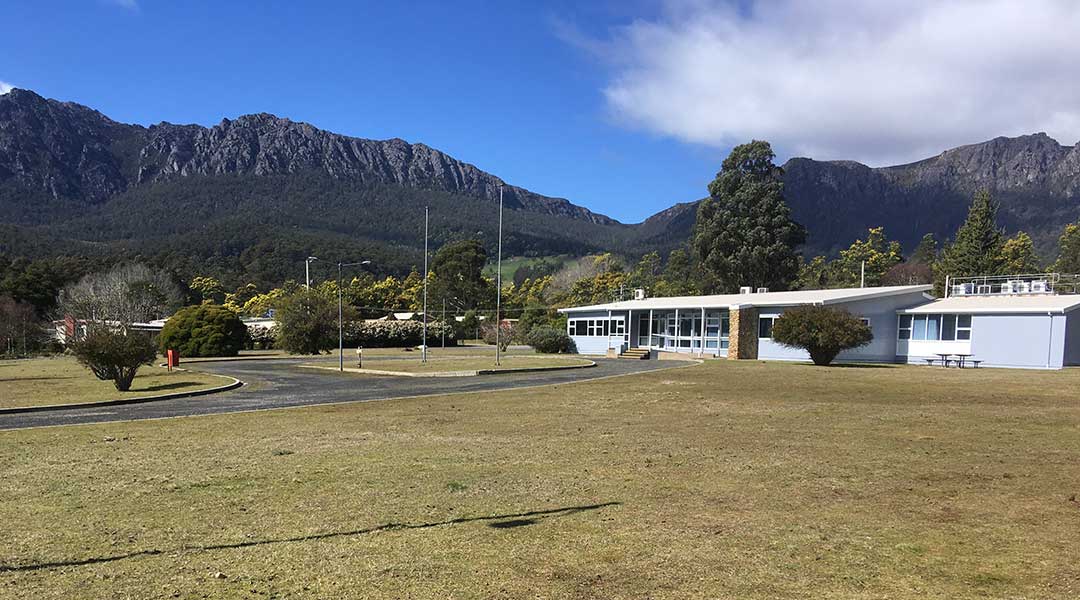
Gowrie Park
15.3 km south-west of Sheffield via Claude RoadThe small town of Gowrie Park is located 16 kilometres south of Sheffield. It is a starting point for walkers climbing Mount Roland. The town has a history as a Hydro construction village. Investigation for the power scheme began in 1952 and construction commenced in 1963. The scheme consists of seven dams and power stations which harness the waters of the Fisher, Mersey, Wilmot and Forth Rivers. The Cethana Dam is the second largest of its type in Tasmania and the Devil’s Gate Dam is a high concrete arch which forms Lake Barrington.

During the construction of the Mersey Forth Power Scheme, Gowrie Park was home for almost 2,000 people. The Hydro Electric Commission created an instant town complete with butcher shop, police station, school, church, cinema, medical centre and general store. The Gowrie Park School catered for the children of the 250 families with some class sizes as high as fifty seven. Many different languages were spoken due to the diversity of countries from which the work force was drawn.
However, with the completion of the scheme, the town disappeared almost as quickly as it had risen. Although the HEC still operates a maintenance depot from Gowrie Park, little remains of the township today apart from daffodils which come up in spring to flag the location of former homes. Much of the township site is now operated as Wilderness accommodation centre, featuring murals, pioneer settlement and licensed restaurant.

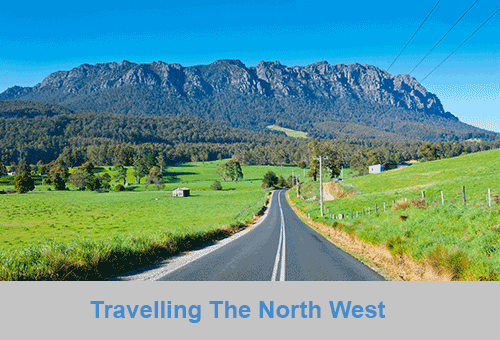
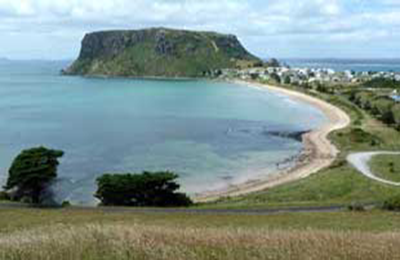
The North West coast extends from Burnie all the way west to Cape Grim, Tasmania's rugged north-west corner. Along the way are the beachside towns and villages of Wynyard, Boat Harbour Beach, Stanley and Smithton, as well as the rugged volcanic headlands od The Nut (Circular Head), Rocky Cape and Table Cape.
Full Itinerary


The first European settlement of Tasmania's Central Coast commenced in the 1840s, the rich basalt soil proved ideal for cropping, and today agriculture is the principal contributor to the area’s economy. Motorists travelling along the north-west of Tasmania are well served by the National Highway. Central Coast, however, is fortunate to have retained a small section of ‘old highway’. This scenic coastal detour hugs the headlands and sandy shores from Ulverstone through to Howth and is well worth the extra time taken to travel this scenic route.
Full Itinerary


Boasting rolling farmland, the hinterland of Tasmania's central coast is home to some of the region's finest agriculture and local produce, its narrow roads making their way through lush farmlands on their way to the alpine terrain of Cradle Mountain. The area is world-renowned for its bush-walking, mountain ranges and canyons, and laid-back small towns set againt mountainous backdrops.
Full Itinerary


The area is dominated by the Tarkine, a wilderness area containing a wildly diverse landscape, a world of natural treasures including Australia's largest patch of temperate rainforest, mountain ranges, wild river and cave systems and buttongrass moorlands. Waterways can be explored by canoe, kayak and riverboat cruises through forests of blackwood, myrtle and celery top pine all the way to the sea.
Full Itinerary


Set against the backdrop of the Great Western Tiers, the Mradner Valley is located at the western end of the Central Coasy Hinterland, located midway between Launceston and Devonport. Dotted among the farms of the area are numerous small towns, each with their own individual character and colonial-era charm. Deloraine, on the banks of the Meander River, has become a centre for artists and craftspeople, drawn by the lifestyle and inspired by the stunning scenery.
Full Itinerary


2 to 3 hours drive from Devonport and Burnie, Tasmania's West Coast region is made up of serene natural harbours, rugged coast, densely forested mountain ranges, fast flowing rivers, steep gorges, rainforest wilderness and ghost towns. The region has some of the most pristine and beautiful wilderness in the world, encapsulated in the World Heritage listed Franklin-Gordon Wild Rivers National Park. Bushwalkers are rewarded by spectacular nature sights. Even the less energetic can enjoy the untouched rainforests while cruising the Gordon and Pieman Rivers.
Full Itinerary
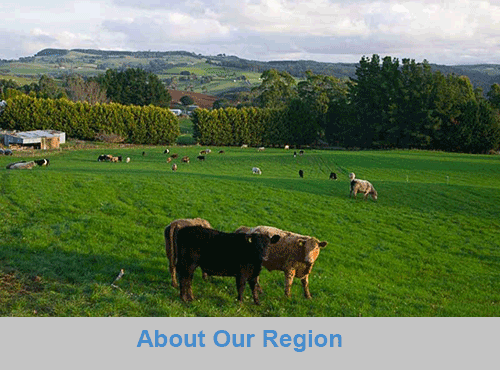
The North West region of Tasmania covers a vast area including the towns of Devonport, Burnie, Cradle Mountain National Park and the Tasmanian west coast as far south as Strahan and Queenstown. The gateway to this region is Devonport, with an airport and the Spirit of Tasmania (ferry between Victoria and Tasmania) terminus. The port handles much of the export produce from the rich agricultural areas around Devonport. The town itself is used as an arrival or departure port for most travellers rather than a destination itself.
A major farming area stretches from Devonport along the coast to Stanley. Many of Australia's finest vegetable and dairy produce come from this region. Stanley is an historic fishing village with a large volcanic headland - The Nut - accessible by chairlift. Far out to the north-west in the stormy waters of Bass Strait, King Island consists very much of uninhabited bushland teeming with wildlife. The island produces some of the best dairy products, for which it is famous.
Cradle Mountain-Lake St Clair National Park, in Tasmania's World Heritage Wilderness Area, offers a rugged environment with many wilderness retreats and walking tracks. Icy streams, ancient pines, glacial lakes and wildlife surround the jagged contours of Cradle Mountain. The area is one of the most glaciated in Australia and includes Tasmania's highest mountain, Mt Ossa (1617 metres) and Lake St Clair, Australia's deepest natural freshwater lake, the source of the River Derwent.
The West Coast area of Tasmania is made up of rugged coast, mountain ranges, flowing rivers, steep gorges, rainforest wilderness and ghost towns. Strahan is situated on Macquarie Harbour and is the starting point for Gordon River cruises and air tours over the South West Wilderness. Strahan is the only town on this rugged and dangerous coast.













